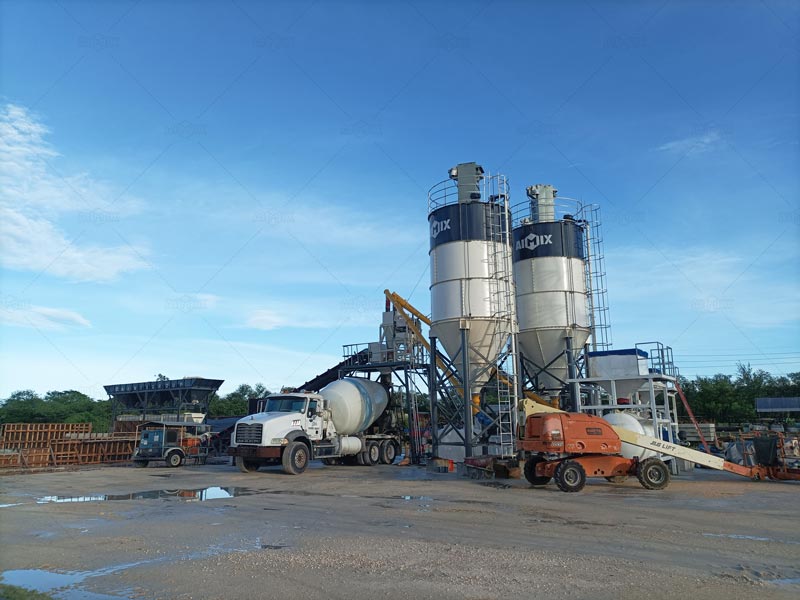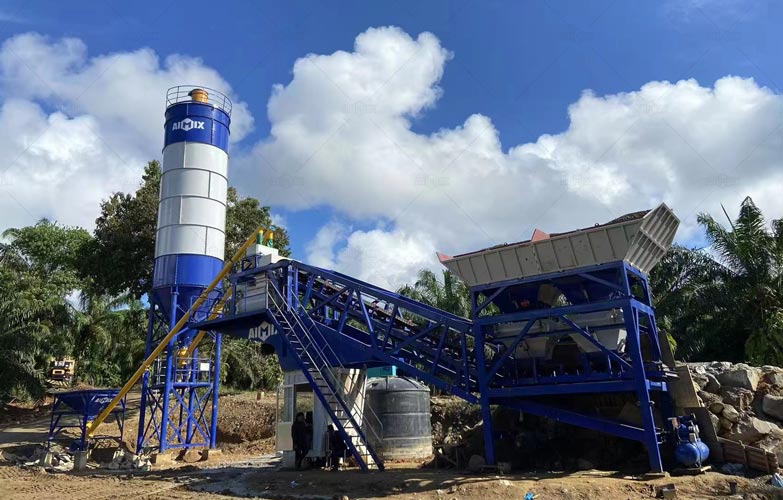
Choosing the right wearing parts for a concrete plant is more than a maintenance task — it is a strategic decision that affects uptime, product quality, and long-term costs. For contractors and plant managers across Latin America, especially those evaluating a concrete plant for sale in Peru, understanding whether parts are versatile and truly compatible with their equipment can mean the difference between quick repairs and prolonged downtime. This guide explains practical steps to evaluate interchangeability, material suitability, and supplier reliability so you can make informed purchases that protect productivity and control the total cost of ownership.
Wearing parts — mixer blades, liners, conveyor belts, bearings, seals, and valves — operate under heavy abrasion and repetitive impact. Versatility (the ability of a part to fit multiple models or brands) reduces the number of SKUs you must stock and simplifies logistics. Compatibility (the degree to which a part performs safely and effectively inside a specific machine) ensures the part will not compromise mixing quality or cause premature failure.
When evaluating offers and comparing a low concrete plant(planta de hormigon) price versus expected maintenance costs, remember that a cheaper plant with non-standard parts can generate higher lifecycle expenses. Conversely, selecting components that are both versatile and compatible helps stabilize spare-parts budgets and shortens repair lead times.

Use these practical checks to determine if a wearing part is versatile and will work across your fleet:
Versatile parts often follow industry standard dimensions. Check bolt patterns, shaft diameters, flange sizes, and mounting geometries. Parts that adhere to common standards are easier to swap between different models and brands without custom adapters.
Some parts are manufactured in multiple material grades (e.g., manganese steel, chromium-carbide overlays, polyurethane). A part offered in standard hardness ranges that match typical plant requirements will be usable across several machine types while enabling you to pick the right wear profile for specific aggregate abrasiveness.
Ask suppliers for cross-reference tables or compatibility charts. Reliable vendors often publish part numbers that map to multiple machine models — a clear sign of purposeful design for interchangeability.
Compatibility goes beyond physical fit. A compatible part must perform mechanically and chemically in the plant’s operating environment.
For rotating parts such as blades and couplings, balancing and tolerance limits are critical. A physically matching blade that is out of balance will increase vibration, accelerate bearing wear, and reduce mixing uniformity. Never assume a visual fit guarantees mechanical compatibility; request tolerance and balancing specifications.
Local conditions — humidity, salt in coastal air, fine siliceous aggregates in some Peruvian regions — affect how materials perform. Choose seals and electrical interfaces rated for the local environment. Suppliers who provide material certificates and environmental performance data make it easier to validate compatibility.
For parts involving sensors, actuators, or control modules, verify voltage, signal types (analog vs. digital), and communication protocols. A sensor that fits mechanically but uses a different signal standard can cause calibration errors and misread weighings.
Follow this checklist to reduce risk when acquiring wearing parts or assessing a new plant purchase:
Whenever possible, trial a sample part under normal operating conditions. Monitor wear rate, energy consumption, and mixing homogeneity over a short production run. Trial data provides objective evidence of compatibility before you commit to bulk orders.
Compare expected life cycles and warranty terms. High-quality aftermarket parts can be cost-effective, but only when validated against OEM performance metrics. Keep a record of actual replacement intervals to inform future buying decisions.
Local service partners can adapt mounting solutions and perform on-site checks to confirm fit and function. In markets where you may be searching for a concrete plant for sale in Peru(venta de planta de concreto en Perú), a local partner’s knowledge of regional operating conditions is invaluable when choosing compatible parts.
Implementing an intelligent inventory strategy helps you capitalize on versatility:

While a lower upfront concrete plant price(planta de hormigón precio) is attractive, account for lifecycle costs related to parts availability, interchangeability, and local servicing. Versatile parts reduce procurement complexity and lower inventory carrying costs. Compatible parts reduce the risk of cascading failures that lead to extended downtime and emergency purchases — both of which are expensive in remote operations.
Determining the versatility and compatibility of mixing plant wearing parts requires a combination of dimensional checks, material assessments, supplier validation, and on-site testing. For buyers and operators evaluating a concrete plant for sale in Peru or managing a mixed fleet, prioritizing standardized, well-documented parts delivers practical benefits: lower spare parts inventory, faster repairs, and more predictable maintenance budgets. Ultimately, a strategic approach to parts selection — one that balances initial concrete plant price with long-term serviceability — will keep plants running reliably and projects on schedule.